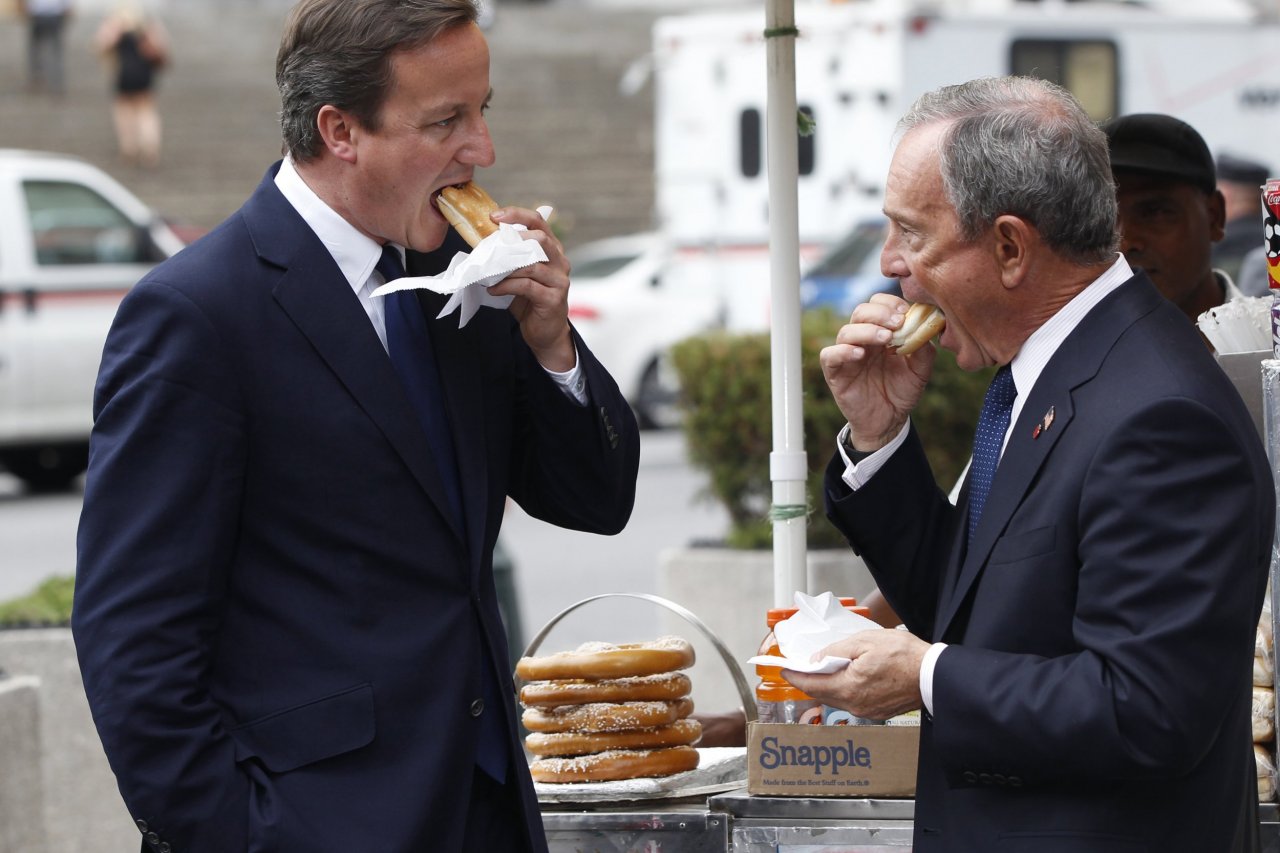How does a trend go mainstream? An idiosyncratically dressed teenager is spotted in a market or nightclub, and suddenly becomes the new "face" of a perfume or fashion line.
Something similar is occurring with casual food, where a food truck near a city bridge or a pop-up bar in a hip part of town morph into standalone restaurants.
These days, thanks to the power of social media, two kids with a skillet and an iPad can suddenly become a viable business model. With the lessening of the power of haute cuisine and fine dining, the food scene has become a free-fire zone with a greater array of food styles coming together than ever before.
While combinations can hail from Korea and Japan, they all seem to have been tweaked and converted by coming to Europe via the United States. One chef said their mission "has always been about the democratisation of food and the breaking down of barriers." However, they are not all aiming at the lower end of the food chain.
One of the most fashionable bars in central London goes very high-low by serving designer hot dogs with a range of excellent champagnes. Called Bubbledogs &, in the zone known as "NoHo" (North of Soho) or Fitzrovia, this place combines chic with street in one manifestation of chef James Knappett's talents – he has a highly regarded set menu establishment behind it, called Kitchen Table.
Another example is Pitt Cue, also in London, a tiny establishment serving classic southern US barbecue along with an encyclopaedic range of Bourbons. Pitt Cue began as a food truck under the arches of Hungerford Bridge on the South Bank, between the London Eye and Festival Hall, where long queues formed to try their 14-hour slow-roasted pulled pork with beans and salad or beef brisket with pickles on toast.
Now, Pitt Cue has its own bestselling cookbook, published in the US in June, and has set new standards for quality sourcing of ingredients. Co-owner Jamie Berger, with a PhD from Harvard in Chinese Civilisation, is anxious to stress they never really wanted to be part of any trend, whether Grunge, Dude or Dirty Food.
"We are not interested in trying to replicate any particular genre or region," he says. "We are taking the very best techniques and then marrying it to the finest products we can find over here. We are rearing nearly 100 Mangalitza pigs in Cornwall – a rare breed from Hungary that has exceptional flavour and fat that is high in monosaturates, which we use in our demi-brioche buns. And we experiment a lot with ginger, garlic and soy – ingredients that a southern US cook would look at in horror."
Hackney, a once deprived but now super fashionable area of East London, is home to Rita's, a restaurant that is happy to combine New-York-inspired street food with serious Asian overtones. It began as a pop-up restaurant in a noisy bar in neighbouring Dalston with food that one critic described as "pimped junk food" or in a more polite phrase, "American classics".
Lunch is dominated by dishes that would not be out of place in Pitt Cue – Ham Hock Hash with Duck Egg, fried chicken and waffles or Kentucky Hot Brown, a southern US sandwich dominated by bacon and melted cheese. However, at night, there are far more Korean or Japanese elements, including a miso-grilled aubergine and mushroom dish with soy and spring onions, or rice noodles with beetroot and lardo (though here it is referred to as pig's head ham).
Gabriel Pryce, the young co-chef, is happy to admit he is heavily influenced by what he calls "second generation American immigrant food" especially as interpreted by Danny Bowien, a Korean-American chef currently operating from a pop-up in Brooklyn called Mission Chinese. Pryce says: "We don't do anything traditional or by the book, but our food has its roots in America, probably because I lived in New York for five years. We are not bastardising but tweaking."
Instead of table wine, there is an emphasis on cocktails or obscure bottled beers. Rita's must be one of the first new restaurants here that attracts outsiders from the neighbourhood. Many of the world's renowned chefs visited last month during the Top 50 Restaurant Awards, curious to see what sort of innovation is happening in London.
This generation of chefs is not bothered about how they are categorised or what boundaries inhibit or inspire them. "Behind all of our food there is technique and 'cheffiness' but you take it at whatever level you want," says Pryce. "We are not a food blogger place but we still have people coming from a fair distance to try us."
The impact of American-inspired cuisine is not just making waves in London – even Paris is feeling the impact. Last year, Greg Marchand of Frenchie, one of the most influential of the younger generation of French chefs, opened an American-inspired bar and takeaway called Frenchie to Go. Marchand named his establishments after earning the nickname Frenchie, while he was head chef at Jamie Oliver's Fifteen restaurant in London. However, he also spent several years in New York, including at the iconic Gramercy Tavern. Frenchie to Go is packed from breakfast onwards, with its bacon sandwich served in an English muffin, to cinnamon sticky buns, while lunch might be a smoked trout bagel, a pulled pork sandwich or a lobster roll.
"I loved creating a space where you can come with your computer for breakfast, or come for a late lunch at 4pm – a fun place that is authentic using the same care as we do in the restaurant," says Marchand. "Most people just assemble ingredients, whereas here we produce everything – we ferment the sauerkraut in the cellar, we smoke our own bacon, we stuff our own -sausages, we even do our own ginger beer."
























